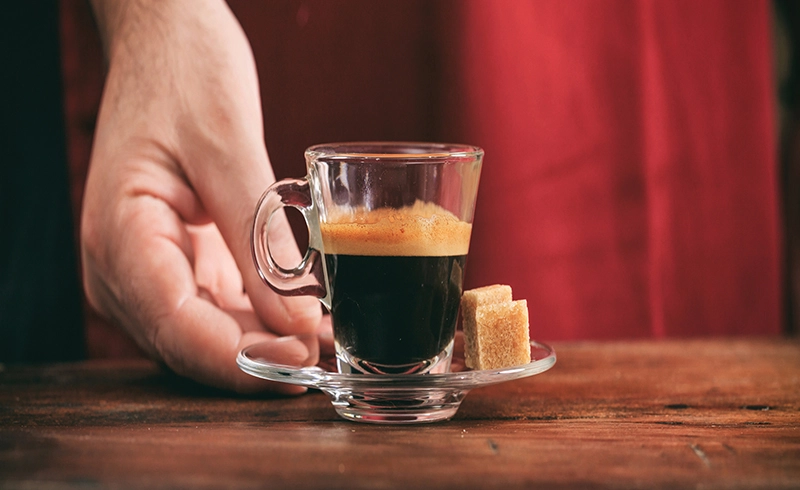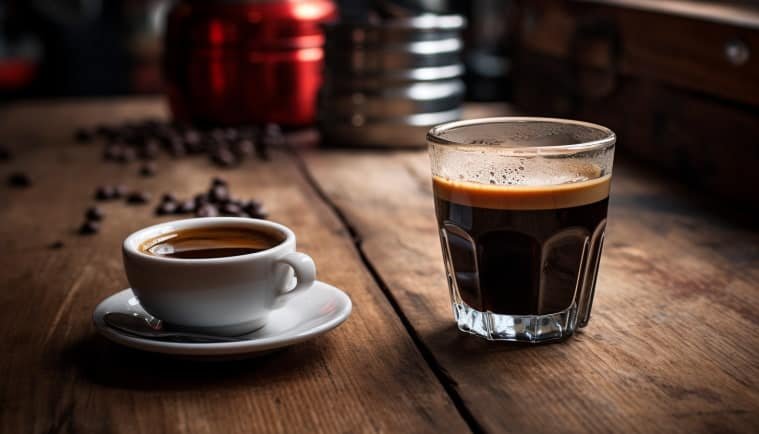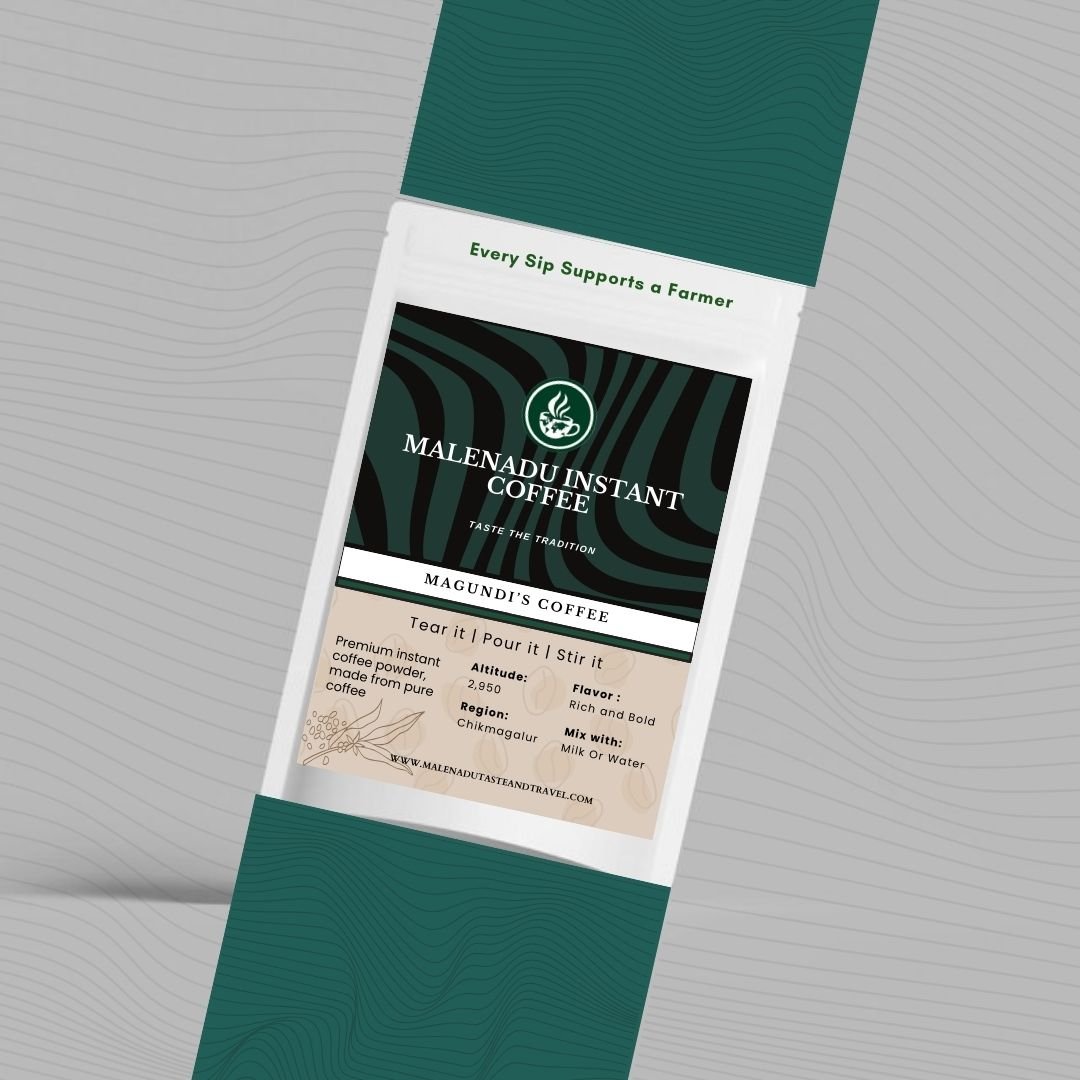Your cart is currently empty!

Introduction
Welcome to the ultimate guide to espresso coffee! Whether you’re a seasoned coffee enthusiast or just starting your journey into the rich world of espresso, this article will provide you with everything you need to know. From understanding what makes espresso unique to exploring its various forms and benefits, we’ve got you covered. Let’s dive in!
What is Espresso Coffee?
The Origins of Espresso
Espresso, which means “pressed out” in Italian, originated in Italy in the early 20th century. Luigi Bezzera created the first espresso machine in 1901.. His goal was to create a quick brewing method that could serve concentrated coffee in a short amount of time. The machine he designed used steam pressure to force hot water through finely-ground coffee, producing a small, strong shot of coffee that became known as espresso. This method was revolutionary, providing a fast, efficient way to brew coffee and quickly gained popularity in cafes across Italy. Visit nestcafe.com for more info.
Defining Espresso
Espresso is a coffee-brewing technique that forces hot water through finely ground the beans under high pressure. This process produces a small, concentrated shot of coffee with a rich, intense flavor and a distinctive crema on top. Crema is the golden, creamy layer that forms on top of a properly brewed shot, indicating a well-extracted coffee.
How is Espresso Different from Coffee?
Brewing Process
The brewing process is one of the primary differences between espresso and regular coffee. Espresso is made by forcing hot water through finely-ground coffee under high pressure, typically around 9 bars. This process takes about 25-30 seconds and results in a small, concentrated shot of coffee. In contrast, regular coffee, such as drip or pour-over, is brewed by pouring hot water over coarser grounds and allowing it to steep. This method takes several minutes and produces a larger, less concentrated beverage.

Flavor Profile
It has a bolder, more intense flavor compared to regular coffee. This is due to the concentration of flavors extracted during the high-pressure brewing process. The flavors are more pronounced and complex, offering a robust and rich taste experience. Regular coffee tends to have a lighter, more diluted flavor because it is brewed with a higher water-to-coffee ratio.
Caffeine Content
Contrary to popular belief, espresso has less caffeine per serving than a regular cup of coffee. An average shot of espresso contains about 63 milligrams of caffeine, while an 8-ounce cup of drip coffee contains about 95 milligrams. However, because espresso is consumed in smaller quantities, it delivers a quick, concentrated caffeine boost, which can feel more potent than the gradual effect of a larger cup of coffee.
What is in an Espresso Coffee?
Coffee Beans
Espresso is typically made from a blend of beans, often a mix of Arabica and Robusta varieties. Arabica beans are known for their smooth, nuanced flavors, while Robusta beans add bitterness, body, and a rich crema to the espresso. The specific blend of beans can affect the flavor profile and intensity of the espresso, allowing for a wide range of taste experiences.
Water
The quality of water used in brewing espresso is crucial. Clean, filtered water is essential to avoid any off-flavors that can detract from the coffee’s taste. Water that is too hard or too soft can affect the extraction process and the final flavor of the espresso. Ideally, the water should be at a temperature of about 200 degrees Fahrenheit for optimal extraction.
Is Espresso Coffee with Milk or Not?
Traditional Espresso
Traditional espresso is served as a shot without milk. It’s enjoyed for its pure, unadulterated coffee flavor. This straightforward preparation allows drinkers to fully appreciate the rich, complex flavors of the espresso and the skill involved in its preparation.
Variations with Milk
There are many popular variations of espresso that include milk, such as lattes, cappuccinos, and macchiatos. These beverages blend the bold flavors of espresso with the creamy texture of milk. For example, a latte is made with a shot of espresso and steamed milk, topped with a small amount of milk foam. A cappuccino has equal parts espresso, steamed milk, and milk foam, creating a balanced, frothy drink. Macchiatos stain espresso shots with a small amount of milk or milk foam, adding a touch of creaminess to the strong coffee flavor.
Is Espresso Coffee Stronger?
Concentration of Flavors
Espresso is known for its intense, concentrated flavors. This makes it taste stronger compared to a regular cup of coffee, even though it might contain less caffeine overall. The high-pressure brewing process extracts a greater concentration of coffee oils and flavors, resulting in a rich, robust taste.
Caffeine Levels
While espresso has less caffeine per ounce than drip coffee, its small serving size means you get a quick, concentrated caffeine hit. A standard shot of espresso contains about 63 milligrams of caffeine, while an 8-ounce cup of drip coffee contains about 95 milligrams. Espresso typically provides a rapid, intense burst of caffeine because it is consumed in smaller quantities (1-2 ounces).
Espresso Coffee Recipe

Ingredients
- Freshly ground espresso beans
- Clean, filtered water
Step-by-Step Instructions
- Preheat your espresso machine. Ensure that the machine is warmed up and ready to brew.
- Grind your coffee beans to a fine consistency. The grind size should be finer than for drip coffee but not so fine that it clogs the machine.
- Tamp the grounds into the portafilter evenly. Use a tamper to press the grounds firmly and evenly into the portafilter basket.
- Brew by running hot water through the grounds under pressure. Insert the portafilter into the machine and start the brewing process. The extraction should take about 25-30 seconds.
- Serve immediately and enjoy the rich, concentrated flavor. A well-pulled shot should have a golden crema on top and a balanced, rich flavor.

Espresso Coffee Beans
Bean Types
Espresso can be made from various beans, but blends are commonly used to achieve a balanced flavor. Arabica beans offer smooth, nuanced flavors, while Robusta beans add bitterness and a rich crema. The specific blend of beans can affect the overall taste, with some blends emphasizing sweetness and others focusing on bold, robust flavors.
Roast Levels
Espresso beans are usually roasted to a medium or dark level to bring out deep, rich flavors. The roast level can significantly affect the taste profile of the espresso. Medium roasts offer a balance of acidity and body, while dark roasts provide a more pronounced, bitter flavor with lower acidity. The choice of roast level depends on personal preference and the desired flavor profile.
Espresso Coffee Brands
Popular Brands Worldwide
Brands like Lavazza, Illy, and Nespresso are renowned for their high-quality espresso products. These brands offer a range of options for both home and professional use. Lavazza produces rich, full-bodied blends, while Illy offers smooth, balanced flavors. Nespresso provides convenient, high-quality espresso pods that are compatible with their proprietary machines.
Specialty Brands
Specialty brands focus on unique, high-quality beans and often source their coffee through direct trade. Examples include Blue Bottle Coffee and Stumptown Coffee Roasters. These brands emphasize freshness, sustainability, and unique flavor profiles, often featuring single-origin beans and small-batch roasts.
| Brand | Product Name | Price (INR) |
| Lavazza | Super Crema | ₹2,200 |
| Illy | Classico Medium Roast | ₹1,500 |
| Blue Tokai | Vienna Roast Espresso | ₹850 |
| Nescafé | Gold Blend Espresso | ₹450 |
| Davidoff | Café Espresso 57 | ₹500 |
Espresso Coffee Powder
What is Espresso Coffee Powder?
Espresso coffee powder is finely ground coffee that is specifically designed for making powder. People often use it in recipes to add a coffee flavor. This powder, which is more finely ground than regular coffee, is intended for use with the machines or for adding a concentrated coffee flavor to baked goods and desserts.
How to Use Espresso Coffee Powder
Espresso powder can be used in baking to enhance chocolate flavors, or dissolved in hot water to make a quick cup of espresso. It’s a versatile ingredient that adds depth and richness to recipes, making it a favorite among bakers and chefs.
Espresso Coffee Price
Price Range
The price can vary widely depending on the quality and brand. Expect to pay anywhere from 850to 2500 Inr per pound for high-quality beans. Specialty or single-origin beans may cost more, reflecting their unique flavors and sourcing methods.
Factors Influencing Price
Factors such as bean origin, roast level, and brand reputation can all influence the price of espresso coffee. Specialty beans from specific regions or farms, organic certifications, and fair-trade practices can also contribute to higher prices.
Espresso Coffee vs. Black Coffee

Key Differences
Brewing espresso under pressure results in a much more concentrated beverage compared to black coffee, which is brewed by steeping. The brewing methods result in distinct differences in flavor, texture, and intensity.
Taste and Texture
Espresso has a richer, more intense flavor and a thicker texture compared to the lighter, smoother taste of black coffee. The high-pressure extraction process produces a full-bodied shot with a complex flavor profile, while black coffee tends to be lighter and more acidic.
Espresso Coffee vs. Cappuccino
Preparation Methods
Espresso is a single shot of coffee, while cappuccino is a combination of espresso, steamed milk, and milk foam. A typical cappuccino consists of one-third espresso, one-third steamed milk, and one-third milk foam, creating a balanced, creamy drink.
Flavor Profiles
Cappuccino has a creamy texture and a milder coffee flavor due to the added milk, while espresso is bold and concentrated. The milk in a cappuccino adds sweetness and softens the intensity of the espresso, making it a popular choice for those who prefer a less intense coffee experience.
Espresso Coffee Benefits
Health Benefits
Espresso is rich in antioxidants and can help improve mental focus and concentration. It also has potential benefits for heart health and metabolism. Studies suggest that moderate coffee consumption, including espresso, may reduce the risk of certain diseases, such as Parkinson’s disease and type 2 diabetes.
Nutritional Information
A shot of espresso is low in calories, typically containing just 2-5 calories per ounce, with no added sugars or fats. This makes it a healthy choice for those looking to enjoy the benefits of coffee without consuming excess calories.
For more update on upcoming article follow us on
Conclusion
Espresso coffee is a versatile and complex beverage with a rich history and a wide range of flavors and preparations. Whether you enjoy it straight or as part of a creamy cappuccino, understanding the nuances of espresso can enhance your appreciation for this beloved coffee style. From its origins in Italy to its global popularity today, espresso continues to captivate coffee lovers with its intense flavors and quick, energizing boost.
Visit malenadutasteandtravel.com for more blogs on coffee powder and other spices of India




Leave a Reply